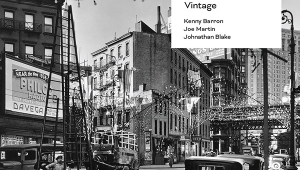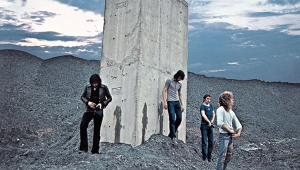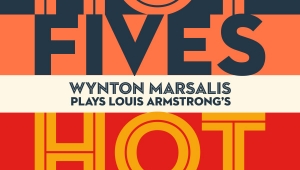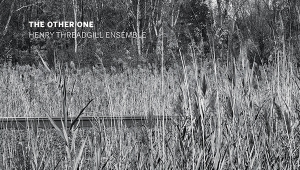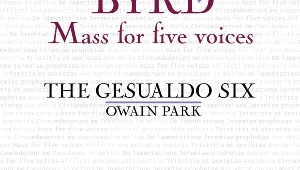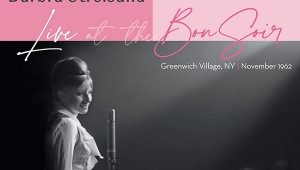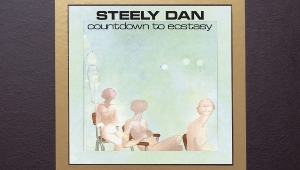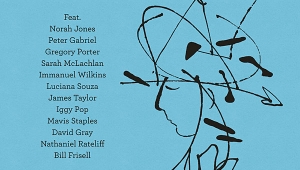| Columns Retired Columns & Blogs |
Recordings of October 1992: ...This Is Now/Brahms & Weber Clarinet Quintets
EDDIE DANIELS: ...This Is Now
Eddie Daniels, clarinet; Billy Childs, piano; Tony Dumas, Jimmy Johnson, bass; Ralph Penland, Vinnie Colaiuta, drums
GRP GRD-9635 (CD only). Bernie Kirsh, eng.; Eddie Daniels, Billy Childs, prods. DDD. TT: 64:31
Eddie Daniels, clarinet; Billy Childs, piano; Tony Dumas, Jimmy Johnson, bass; Ralph Penland, Vinnie Colaiuta, drums
GRP GRD-9635 (CD only). Bernie Kirsh, eng.; Eddie Daniels, Billy Childs, prods. DDD. TT: 64:31
BRAHMS: Clarinet Quintet in b, Op.115
WEBER: Clarinet Quintet in B-Flat, Op.34
Eddie Daniels, clarinet; The Composers String Quartet
Reference Recordings RR-40 (LP), RR-40CD (CD). Keith O. Johnson, eng.; J. Tamblyn Henderson, Jr., prod. AAA/DDD. TT: 62:31
Equally adroit performing jazz or classical music, heralded as a unique talent by Leonard Bernstein and Leonard Feather (the latter contributes GRP's liner notes), Eddie Daniels proves more than up to the challenge on these exceptional recordings. And with over an hour of music on each, the listener has time to relax and surrender to some uncommon musical artistry.
 On the extremely well recorded ...This Is Now, his sixth album for GRP, Daniels charges right out of the gate, smokin' all the way, on Bill Evans's "34 Skidoo." This tune provides Eddie the perfect vehicle with which to demonstrate his chops, setting the stage for a tour de force of outstanding jazz ensemble playing. The album succeeds due largely to Daniels's impeccable phrasing, quick fingers, and ebullient, swinging style. Nor does the rhythm section disappoint, propelling the music forward, combining drive with unerring taste. Pianist and composer Billy Childs shines on several tracks, especially "Double Image" and "All the Stars Are Out." Bassist Tony Dumas and drummer Ralph Penland are featured on the relaxed Thad Jones tune, "3 and 1." The tempo slows a bit on "It Was Always You," where Daniels again makes it sound easy. He makes everything here sound effortless.
On the extremely well recorded ...This Is Now, his sixth album for GRP, Daniels charges right out of the gate, smokin' all the way, on Bill Evans's "34 Skidoo." This tune provides Eddie the perfect vehicle with which to demonstrate his chops, setting the stage for a tour de force of outstanding jazz ensemble playing. The album succeeds due largely to Daniels's impeccable phrasing, quick fingers, and ebullient, swinging style. Nor does the rhythm section disappoint, propelling the music forward, combining drive with unerring taste. Pianist and composer Billy Childs shines on several tracks, especially "Double Image" and "All the Stars Are Out." Bassist Tony Dumas and drummer Ralph Penland are featured on the relaxed Thad Jones tune, "3 and 1." The tempo slows a bit on "It Was Always You," where Daniels again makes it sound easy. He makes everything here sound effortless.
Daniels is also a gifted composer; a third of the tunes are his, not a dud among 'em. I especially liked the ballad "Cry." My only complaint is that there's so much good music on ...This Is Now, it's difficult to get anything else done. Buy it and revel in hearing what honest, modern jazz is all about.
As for the Reference discs—my God, what a lovely recording. If more sessions were recorded this well, reviewers could spend more time discussing the music, and listeners everywhere would enjoy music significantly more. The Troy Savings Bank Music Hall proved the perfect venue for recording these two masterpieces of chamber music; the sensation of "being there" is remarkable. So is the level of fine, low-level detail, faithfully captured by engineer Keith O. Johnson. The English Coles ribbon mikes Dr. Johnson used catch every nuance of the performance. The degree to which you hear these effects is limited only by the resolving power of your system. I won't further discuss this recording's sonic aspects; it's state-of-the-art, among the best I've ever heard. Unless future Reference Recordings I might review fall short of the standard set here, I won't comment on their recording quality either.
 I'm no expert on the chamber music of Brahms or Weber. But as soon as the first strains of the Weber swept through my room, I felt my blood pressure drop. This is great music by any standard—with the exception of the second movement, Weber's Quintet is all gaiety, spirit, and fun, and the performance by Daniels and the Composers String Quartet is spirited, emotive, compelling, and exciting. When the music turns dark in the somber, introspective Fantasia, the performers capture the shift. Daniels sings through his clarinet throughout this movement as the music wanders through melancholy and despair. The puckish Menuetto restores the carnival-like atmosphere, segueing into the highly charged Rondo. And with much bravura and more fine, fleet-fingered playing from Daniels, the finale had me on the edge of my seat. Bravo!
I'm no expert on the chamber music of Brahms or Weber. But as soon as the first strains of the Weber swept through my room, I felt my blood pressure drop. This is great music by any standard—with the exception of the second movement, Weber's Quintet is all gaiety, spirit, and fun, and the performance by Daniels and the Composers String Quartet is spirited, emotive, compelling, and exciting. When the music turns dark in the somber, introspective Fantasia, the performers capture the shift. Daniels sings through his clarinet throughout this movement as the music wanders through melancholy and despair. The puckish Menuetto restores the carnival-like atmosphere, segueing into the highly charged Rondo. And with much bravura and more fine, fleet-fingered playing from Daniels, the finale had me on the edge of my seat. Bravo!
If the Weber Quintet is beautiful, the Brahms is sublime. A few notes into the opening Allegro and you're immersed in a world of elegiac melodies which become even more lovely as the music continues. Brahms was a master of lush, golden-ripe melodies, and Op.115 is chock-full of them. To me, the rhapsodic Adagio is chamber music at its best, the aural equivalent of robust, California Zinfandel in tall-stem glasses, served seaside at sunset. If music can swoon, this does.
As in the Weber, the musicians perform splendidly. Their intonation is impeccable, they maintain the music's pulse (varying it when called for), and convey the majestic sweeps of melody with emotion and conviction, five musicians playing as one. To be moved by the results requires no special facility; just a pair of ears and an open heart.
This LP is among the first batch of Reference Recordings to be cut on their own custom-modified, half-speed mastering lathe. The struggle to keep the analog tradition alive, exemplified by the release of this (and other) LPs at a time when other companies are melting down vinyl, attests to Reference Recordings' determination, commitment, and vision in offering music lovers an analog alternative. Thank you, Tam Henderson.
Like most Reference sessions, this one was recorded simultaneously AAA and DDD, for LP and (excellent-sounding) CD, respectively. The first difference that struck me was the shift in perspective: the listener is seated in row E with the CD, row J with the LP. I also picked up more hall sound on LP, no doubt due to a better capturing of the ratio between direct/reflected sound and the venue's natural ambience. The LP simply has more "air." Strings and clarinet are harmonically richer on LP, the strings more "rosiny" (especially viola and cello, which seem to "glow" more), the clarinet more "woody." Leading edges of notes are also more distinct on LP. The vinyl's noise floor is surprisingly low, attesting to skillful mastering and good quality control in later production stages. The surfaces are quiet, the record flat and glitch-free. It's a keeper.
But this release is significant in either format. I recommend buying both.—Guy Lemcoe
- Log in or register to post comments


